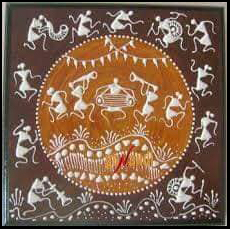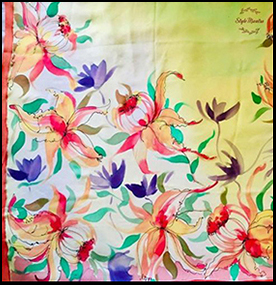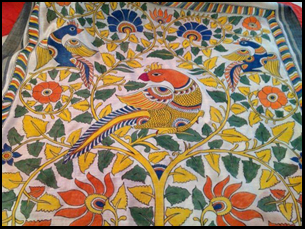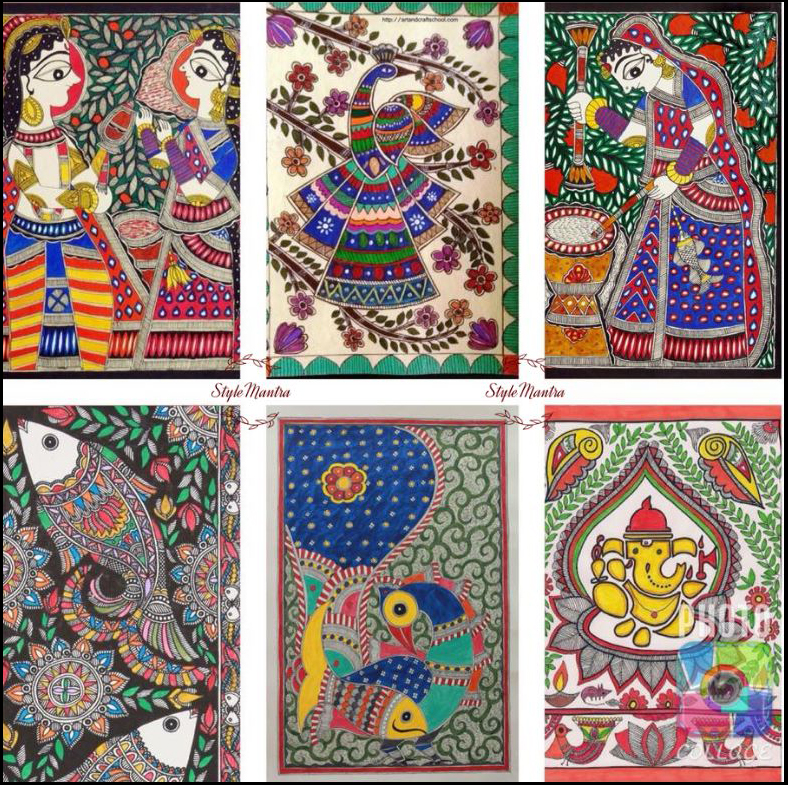Floral Chinese Painting
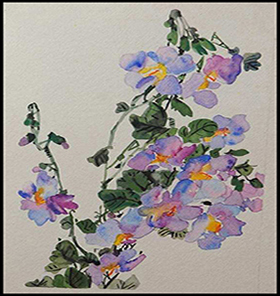
Floral Chinese painting on chinese silk using ink Chinese colours by Ragini Goorha (This one is from a series of 6 Floral paintings. These were published as Greeting cards and were widely used Internationally.
Traditional Chinese painting ("guo hua") is similar to calligraphy - which itself is considered to be the highest form of painting - and is executed with a brush (made of animal hair) dipped in black ink (made from pine soot and animal glue) or coloured ink. Oils are not generally used. The most popular type of media is paper or silk, but some paintings are done on walls or lacquerwork. The completed artwork may then be mounted on scrolls, which are hung or rolled up. Alternatively, traditional painters may paint directly onto album sheets, hand-made paper, walls, Chinese lacquerware, folding screens, and other media. In simple terms, there are two types of "guo hua": the first, known as "Gong-bi" or meticulous-style, is also described as court-style painting; the second, known as "Shui-mo" or "xie yi" or freehand-style, is also called ink and brush painting, or "literati painting".
